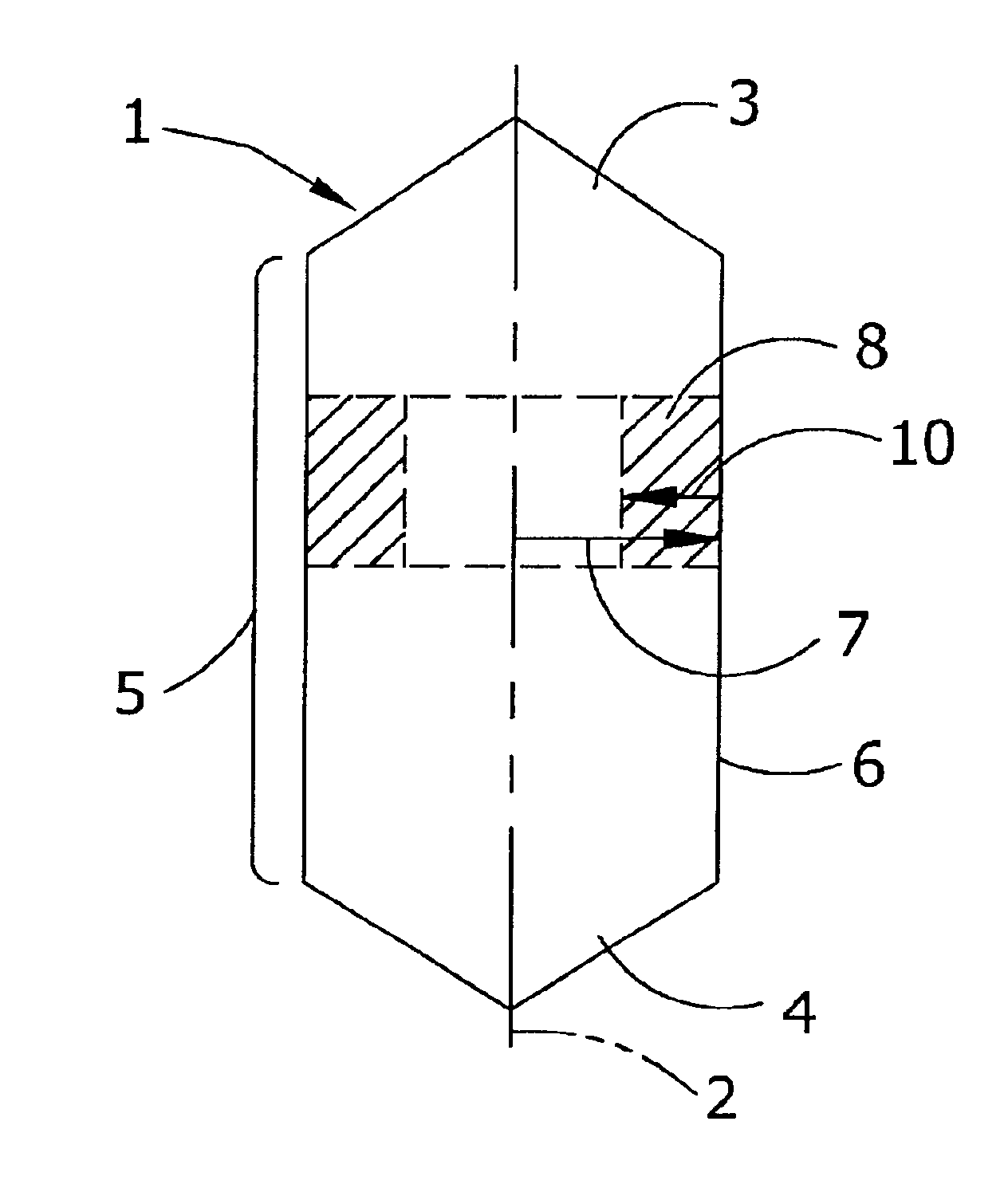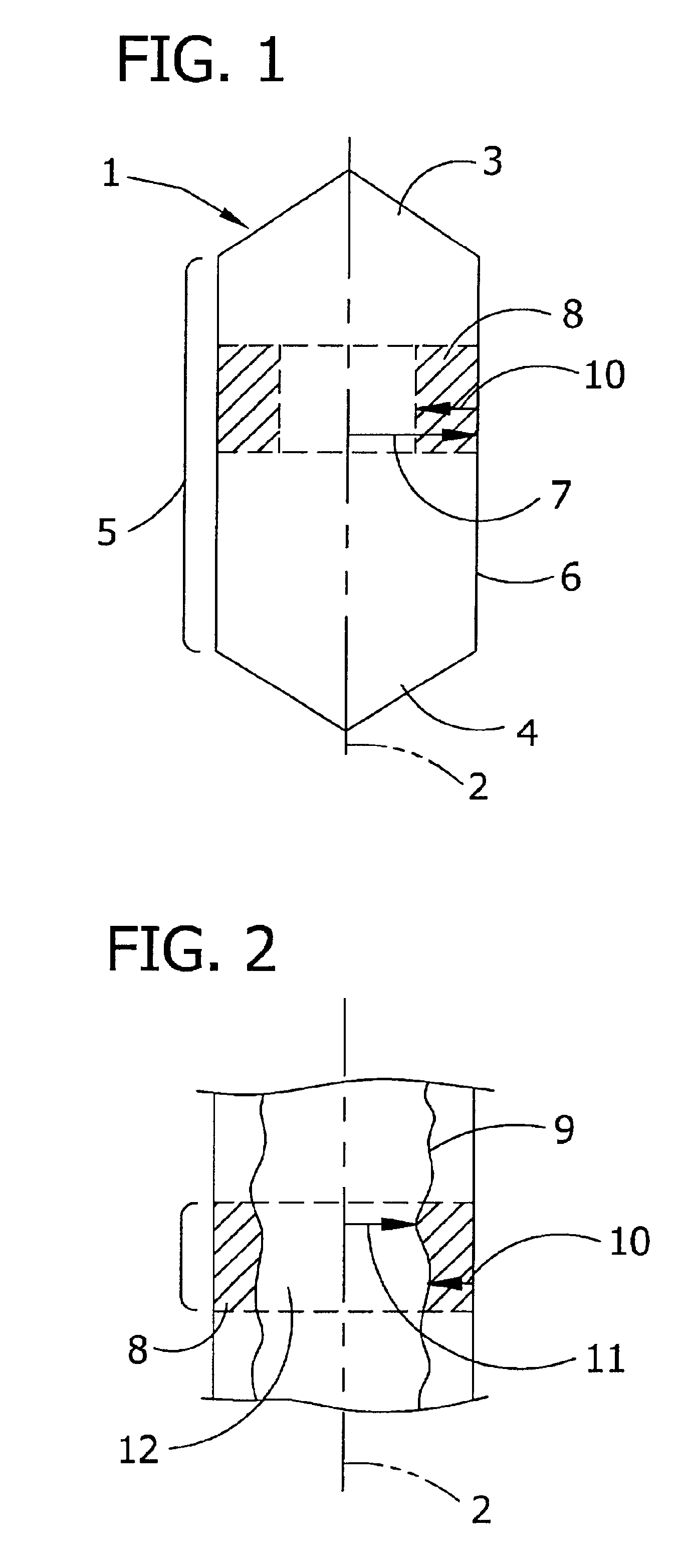Low defect density silicon having a vacancy-dominated core substantially free of oxidation induced stacking faults
a low defect density, vacancy-dominated core technology, applied in the field of semiconductor grade single crystal silicon preparation, can solve the problems of increasing the number of defects in single crystal silicon form, the formation of agglomeration intrinsic point defects, so as to achieve the effect of reducing concentration
- Summary
- Abstract
- Description
- Claims
- Application Information
AI Technical Summary
Benefits of technology
Problems solved by technology
Method used
Image
Examples
example
In accordance with the present invention, a series of single crystal silicon ingots having a diameter of about 200 mm were grown in accordance with the Czochralski method, a portion of the series being grown in a crystal puller which did not possess an additional apparatus for cooling the solidified ingot and a portion being grown in a crystal pulling apparatus which did (e.g., a crystal puller having a cooling jacket positioned in the transition area of the puller, such as the one described herein). Each ingot was generally grown using the same growth conditions, such that each had a segment comprising an interstitial-dominated, axially symmetric region which was substantially free of agglomerated defects and which was concentric about a vacancy-dominated, axially symmetric region (the width of each axially symmetric region, from one ingot to the next, being approximately the same). The only significant difference between the ingots, or the ingot segments, that were grown and analy...
PUM
 Login to View More
Login to View More Abstract
Description
Claims
Application Information
 Login to View More
Login to View More - R&D
- Intellectual Property
- Life Sciences
- Materials
- Tech Scout
- Unparalleled Data Quality
- Higher Quality Content
- 60% Fewer Hallucinations
Browse by: Latest US Patents, China's latest patents, Technical Efficacy Thesaurus, Application Domain, Technology Topic, Popular Technical Reports.
© 2025 PatSnap. All rights reserved.Legal|Privacy policy|Modern Slavery Act Transparency Statement|Sitemap|About US| Contact US: help@patsnap.com



